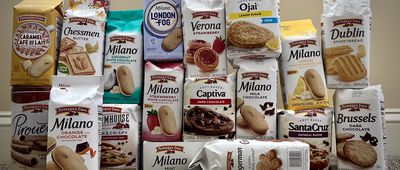I'd read about Turkish coffee. I'd thought about Turkish coffee. But I'd never drank Turkish coffee. I knew it was finely-ground coffee served in a demitasse cup, and it was often a little sweet (though it didn't have to be) and a lot strong.
I was interested in strong. I'd developed a fondness for the Vietnamese coffee I would get at my nearby Vietnamese restaurant, and if I had it any later than 1 p.m., I knew I wasn't going to sleep. In order to try Turkish coffee, I could have spent time looking for an authentic Turkish restaurant near me, but let's face it — Amazon was easier. So I ordered a can online to see if I could make some myself.
@balkanfoodie turkish coffee this morning ❤️ #turkishcoffee #domacakafa #bosanskakafa #turskakafa ♬ original sound - Balkan Foodie
What Do You Need To Make Turkish Coffee?
Amazon lead me slightly awry when buying the coffee. I ordered Venizelos, a Turkish-style ground coffee from a Greek brand. And, though there were many cezve or ibrik choices (that's the little pot you heat the coffee in), I chose stainless steel instead of the more traditional copper. I figured it was close enough, and I wasn't sure about investing in something I'd never tried. The coffee itself can be any kind of bean, so if you have a very fine grinder at home, you can make it yourself with your existing coffee beans. Beyond that, you'll need sugar and water and something to boil it in; a small saucepan will do the trick.
How Do You Make Turkish Coffee?
Fortunately, the can of coffee I bought had instructions on the side. Measure out the water using the cup you want to drink from, dump it in your ibrik, add a teaspoon of coffee for each serving, add a teaspoon of sugar (if you want it sweet) for each serving, and stir. Then you just need to heat it up over a low flame. Once it foams, pour it into cups, turn off the flame, and enjoy.
For more great coffee reviews, please sign up for our free newsletters.
How Is Turkish Coffee Different From Regular Coffee?
The fact that Turkish coffee isn't filtered and is boiled over a flame are probably the biggest differences from regular coffee. You don't traditionally use milk in Turkish coffee, but you can (we'll never tell).
What Does Turkish Coffee Taste Like?
It's a little thicker than a regular brew, and there's a foam on top that will look familiar to espresso drinkers. And, if you add sugar, it's sweet but not cloyingly so. The coffee wasn't bitter or smoky and actually tasted very smooth. While I'm still a fan of Vietnamese coffee (and, honestly, all coffee — even cheap coffee), I don't think I'll have any problem working my way through my can of Venizelos coffee or putting my cheap $15 stainless-steel briki to use. Who knows, I might even upgrade to a copper one. So far my new habit hasn't affected my sleep, but I'm trying to limit caffeine to early in the morning. I have learned my lesson, no matter what kind of coffee I'm drinking.








